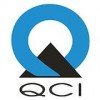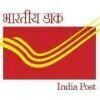Filter interviews by
National Career Service Devops Engineer Interview Questions, Process, and Tips for Experienced
National Career Service Devops Engineer Interview Experiences for Experienced
1 interview found
I applied via Naukri.com and was interviewed in Aug 2024. There was 1 interview round.
(5 Questions)
- Q1. What are the steps to deploy an application to kubernetes?
- Ans.
Steps to deploy an application to Kubernetes
Create a Kubernetes deployment file with specifications for the application
Apply the deployment file using kubectl apply command
Monitor the deployment using kubectl get pods command
Expose the application using a Kubernetes service
Scale the application by adjusting the replica count in the deployment file
- Q2. What are modules in terraform?
- Ans.
Modules in Terraform are reusable configurations that can be used to create multiple instances of resources.
Modules help in organizing and reusing Terraform configurations.
They allow for creating reusable components that can be shared across different projects.
Modules can be used to encapsulate related resources and configurations.
They promote code reusability and maintainability in Terraform scripts.
- Q3. Define stage in docker.
- Ans.
A stage in Docker is a logical division in a Dockerfile where a specific set of instructions are executed and the resulting image is saved.
Stages help in breaking down complex build processes into smaller, manageable parts.
Each stage can have its own base image and set of instructions.
Stages can be used to optimize the build process by reusing intermediate images.
Stages are defined using the 'FROM' keyword in a Dockerf
- Q4. What is CrashLoopBackOff
- Ans.
CrashLoopBackOff is an error state in Kubernetes when a container repeatedly crashes and fails to start.
CrashLoopBackOff occurs when a container in a Kubernetes pod crashes and Kubernetes tries to restart it, but it keeps failing.
This error is often caused by misconfigurations, resource constraints, or application bugs.
To troubleshoot CrashLoopBackOff, check the container logs, resource limits, and pod configuration.
Ex...
- Q5. What is NullResource in terraform.
- Ans.
NullResource in Terraform is a resource that performs no actions when applied, but can be used to trigger provisioners or other side effects.
NullResource is a resource type in Terraform that allows you to run provisioners without creating any infrastructure.
It can be used to trigger actions like running scripts or commands on the local machine or remote servers.
NullResource is often used for tasks like running initiali...
Skills evaluated in this interview
Top trending discussions






Interview questions from similar companies

Devops Engineer Interview Questions & Answers
National Informatics Centreposted on 1 Oct 2024
I applied via Company Website and was interviewed before Oct 2023. There was 1 interview round.
(2 Questions)
- Q1. Project details
- Q2. Experience in each tool
- Ans.
I have experience with a variety of tools commonly used in DevOps, including Jenkins, Docker, Kubernetes, Ansible, and Git.
Proficient in Jenkins for continuous integration and continuous deployment
Familiar with Docker for containerization of applications
Experience with Kubernetes for container orchestration
Skilled in Ansible for configuration management and automation
Proficient in Git for version control and collaborat

Interview Questionnaire
1 Question
- Q1. Gitlab Ci/Cd ,Aws ,linux xommands
I applied via Naukri.com and was interviewed before Dec 2020. There were 3 interview rounds.
Interview Questionnaire
2 Questions
- Q1. Explain previous project and used technology?
- Q2. Most difficult or challenging and how you overcome it.
Interview Preparation Tips

I applied via Naukri.com and was interviewed before Jan 2021. There were 4 interview rounds.
Basic Exam about your knowledge.
We have to speak out properly and clear with our opinion.
(1 Question)
- Q1. Questions about some Technical and level of our confidence.
(6 Questions)
- Q1. What are your salary expectations?
- Q2. What is your family background?
- Q3. Share details of your previous job.
- Q4. Tell me about yourself.
- Q5. Why are you looking for a change?
- Q6. Why should we hire you?
Interview Preparation Tips

I applied via Job Portal and was interviewed before May 2020. There were 3 interview rounds.
Interview Questionnaire
1 Question
- Q1. Mostly technical questions and they considered background profile too
Interview Preparation Tips
I applied via Company Website and was interviewed in Jun 2020. There were 4 interview rounds.
Interview Questionnaire
1 Question
- Q1. About the Technical Background
Interview Preparation Tips

Devops Engineer Interview Questions & Answers
Sourcefuse Technologiesposted on 4 Apr 2022
I appeared for an interview before Apr 2021.
(5 Questions)
Round duration - 60 minutes
Round difficulty - Easy
Technical interview round with questions on Jenkins, Kubernetes, MYSQL etc.
- Q1. What are the differences between declarative and scripted pipelines in Jenkins?
- Ans.
Declarative pipelines focus on the desired state of the pipeline, while scripted pipelines allow for more flexibility and control.
Declarative pipelines use a more structured syntax and are recommended for simpler pipelines.
Scripted pipelines use Groovy script and allow for more complex logic and customization.
Declarative pipelines are easier to read and maintain, while scripted pipelines can be more powerful but harder...
- Q2. How does Jenkins know when to execute a scheduled job or pipeline, and how is it triggered?
- Ans.
Jenkins triggers scheduled jobs or pipelines based on configured cron expressions or triggers from external events.
Jenkins uses cron expressions to schedule jobs at specific times or intervals.
Jobs can also be triggered manually or by external events like code commits to a repository.
Pipeline jobs can be triggered by changes in a Git repository, webhook notifications, or other external triggers.
- Q3. What are the differences between Ansible and Jenkins?
- Ans.
Ansible is a configuration management tool, while Jenkins is a continuous integration and continuous deployment tool.
Ansible is used for configuration management and automation of tasks, while Jenkins is used for automating the build, test, and deployment processes.
Ansible uses YAML for configuration management, while Jenkins uses Groovy scripts for defining build pipelines.
Ansible is agentless, meaning it does not req...
- Q4. What is the difference between Kubernetes Deployments and Pods?
- Ans.
Kubernetes Deployments manage multiple Pods and provide features like scaling, rolling updates, and rollback.
Deployments manage the lifecycle of Pods, ensuring a desired state is maintained.
Pods are the smallest deployable units in Kubernetes, representing a single instance of a running process.
Deployments allow for easy scaling of applications by creating or deleting Pods based on the defined configuration.
Deployments...
- Q5. What are the differences between Ingress and Load Balancer in Kubernetes?
- Ans.
Ingress is a layer 7 HTTP routing mechanism while Load Balancer is a layer 4 TCP/UDP load balancer in Kubernetes.
Ingress is used to expose HTTP and HTTPS routes to services inside the cluster, while Load Balancer is used to distribute traffic across multiple nodes.
Ingress provides features like SSL termination, path-based routing, and name-based virtual hosting, while Load Balancer focuses on distributing traffic based...
(3 Questions)
Round duration - 60 minutes
Round difficulty - Easy
Technical round with questions on AWS Services, Docker, Microservices etc.
- Q1. What are the differences between Amazon ECS and Amazon EKS?
- Ans.
Amazon ECS is a container management service while Amazon EKS is a managed Kubernetes service.
Amazon ECS is a fully managed container orchestration service, while Amazon EKS is a managed Kubernetes service.
Amazon ECS is more tightly integrated with other AWS services like CloudWatch, IAM, and VPC, while Amazon EKS is more flexible and can run on any cloud provider.
Amazon ECS uses its own proprietary orchestration engin...
- Q2. What are the use cases of running Docker inside Docker?
- Ans.
Running Docker inside Docker is useful for testing, CI/CD pipelines, and isolating environments.
Testing different Docker configurations
Running CI/CD pipelines within containers
Isolating development environments
Building and testing Docker images within containers
- Q3. What is the difference between monolithic and microservices architecture?
- Ans.
Monolithic architecture is a single, unified system while microservices architecture is a collection of small, independent services.
Monolithic architecture is a single, indivisible unit where all components are tightly coupled.
Microservices architecture breaks down the application into smaller, loosely coupled services that communicate through APIs.
Monolithic architecture can be harder to scale and maintain compared to...
Interview Preparation Tips
Tip 1 : You'll be selected only and if you're really very technically sound and have working experience in Production environment. You can't fool interviewer.
Tip 2 : Must do Previously asked Interview as well as Online Test Questions.
Tip 3 : Go through all the previous interview experiences from Codestudio and Leetcode.
Tip 1 : Have at-least 2 good projects explained in short with all important points covered.
Tip 2 : Every skill must be mentioned.
Tip 3 : Focus on skills, projects and experiences more.
Skills evaluated in this interview

Devops Engineer Interview Questions & Answers
Sourcefuse Technologiesposted on 13 Mar 2020
I applied via LinkedIn and was interviewed in Feb 2020. There were 5 interview rounds.
Interview Questionnaire
5 Questions
- Q1. Various AWS Services (EKS, DMS, RDS, API-GATEWAY, EC2 [ALB, ELB, ENI, TG, ASG], Route53, VPC), IAM, Scenario based questions.
- Q2. In depth Kubernetes [Pod Template vs Deployment manifest, Ingress vs Loadbalancer vs ClusterIP vs NodePort]
- Q3. Docker inside docker, Micro-service architecture vs Monolithic architecture, EKS vs ECS vs Fargate, Seceario based question [ How to use a single loadbalancer for multiple services in an EKS Cluster ]
- Q4. Jenkins Job [ Declarative pipeline vs Scripted Pipeline ], Jenkins of Kubernetes, Jenkins Job backup, Jenkins server DR
- Q5. MySQL-Aurora vs MySQL, Ansible vs Jenkins
- Ans.
MySQL-Aurora is a managed service while MySQL requires manual management. Ansible and Jenkins are both automation tools.
MySQL-Aurora is a managed service provided by AWS, while MySQL requires manual management.
MySQL-Aurora is more scalable and fault-tolerant than MySQL.
Ansible is a configuration management tool that automates the deployment and management of software.
Jenkins is a continuous integration and continuous d...
Interview Preparation Tips
Skills evaluated in this interview

I applied via Naukri.com and was interviewed before Apr 2021. There were 2 interview rounds.
(1 Question)
- Q1. Profile discussion, interview based on job description.
(1 Question)
- Q1. VMware, SRM, replication, virtualuzation
Interview Preparation Tips
National Career Service Interview FAQs
Tell us how to improve this page.
National Career Service Interviews By Designations
- National Career Service Devops Engineer Interview Questions
- National Career Service Software Developer Interview Questions
- National Career Service Test Analyst Interview Questions
- National Career Service Executive Trainer Interview Questions
- National Career Service Trade Marketing Manager Interview Questions
Interview Questions for Popular Designations
- Senior Devops Engineer Interview Questions
- AWS Devops Engineer Interview Questions
- Devops Interview Questions
- Cloud Devops Engineer Interview Questions
- Azure DevOps Engineer Interview Questions
- Devops Consultant Interview Questions
- DevOps Intern Interview Questions
- Lead DevOps Engineer Interview Questions
- Show more
National Career Service Devops Engineer Interview Process for Experienced
based on 1 interview
Interview experience
Interview Questions from Similar Companies
|
Software Engineer
95
salaries
| ₹3.2 L/yr - ₹6 L/yr |
|
Software Developer
35
salaries
| ₹3 L/yr - ₹6.8 L/yr |
|
Business System Analyst
11
salaries
| ₹8 L/yr - ₹17 L/yr |
|
Full Stack Developer
9
salaries
| ₹1 L/yr - ₹4.8 L/yr |
|
Java Developer
9
salaries
| ₹3 L/yr - ₹7.5 L/yr |

Government of India

National Informatics Centre

Csc E Governance Services

Central Reserve Police Force
- Home >
- Interviews >
- National Career Service Interview Questions >
- National Career Service Devops Engineer Interview Questions for Experienced











